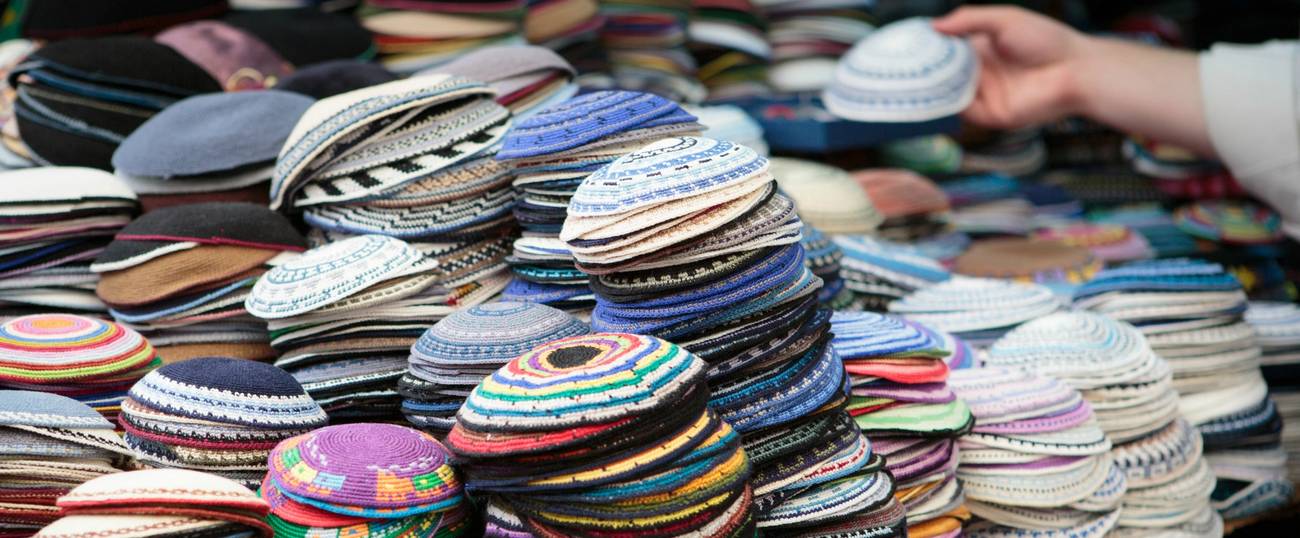Surveying Jews of Color
Judaism—its past, present, and future—is made up of Jews of color. And yet few studies have made the effort to learn about that diverse Jewish population. It’s time to change that.




I have this idea—it’s my mission, in fact—about Jews of color becoming an integral part in Jewish conversations to the point where we have equal representation at the table of “mainstream” American Judaism. I believe that in order for this to happen, we first need to be recognized as a unique facet of the Jewish picture. That is, we need statistics about Jewish diversity in Jewish identity as a whole, beyond denomination and retention rates, for example. What we need is deep, data-driven information about Jews of color—a group that includes those who would be identified ethnically as a “person of color” had they no Jewish heritage; Jews who are phenotypically “white” but who do not come from an Ashkenazi background, such as white Latinos, Greeks, Moroccans, and Italians, among others.
It seems that while nearly every conceivable minutiae of America’s Jewish population has been recorded and re-recorded with painstaking detail, Jews of color have been omitted from just about every Jewish survey of note to date—from the Pew polls, to the those of National Jewish Population Surveys (1971, 1990, and 2000). According to my research, for which I used the Jewish Survey Question Bank, a searchable, open-access database of surveys in social research, there is no documentation of a survey dedicated to accounting Jewish diversity. In fact, of the 117 questions that come up when searching for “diversity,” only two questions actually broach the topic of racial or ethnic background. (They are: “Regarding your ethnicity, do you consider yourself to be White, Hispanic, Black or African American, Asian or Pacific Islander, bi-or-multi-racial, or something else?” from the 2013 Greater Columbus Jewish Community Study and 2010 Howard County (MD) Jewish Community Study, and a question about a survey taker’s level of agreement with the statement, “Cultural diversity within a group makes the group more interesting and effective,” from The Second Year: Evaluation of the Break New Ground Jewish Service Learning Initiative (2010) survey.)
The most recent foray into the subject was the 2005 study conducted by Be’chol Lashon, an advocacy organization for Jewish diversity based in San Francisco. That study shows what some might find startling: an estimated 1 in every 5 American Jews is also a person of color. (Jews of color are defined here as: “Jews of racially and ethnically diverse backgrounds including African, African American, Latino (Hispanic), Asian, Native American, Sephardic, Mizrahi, and mixed-race Jews by heritage, adoption, and marriage.”) But this is a figure that has yet to be further researched in a decade despite the visibility of more and more Jews of color in nearly every imaginable sphere.
This is a problem. It’s one of systemic exclusion. And it needs to be addressed. The future of Judaism—to say nothing of its past and present—is built up of Jews of color too, and it’s about time we stopped stagnating on the question of “what” we are, and started evolving to the question of “who” we are instead. Don’t you think it’s time we found out how Jews of color skew religiously? Or learned about their marriage tendencies, such as whether or not they marry within their faith, and if so, whether or not their spouses are Jews of color, too? And what of the feelings of Jews of color towards Israel? And about the Holocaust? How many of us identify as LGBTQI? Not only are these questions of statistical and epistemological importance, but they also resonate with real-world relevance throughout mainstream Judaism as well. Consider how many Jews of color may or may not have Ashkenazi genetic descent. These statistics could help couples identify risk when it comes to screening for diseases like Tay-Sachs.
It’s about time we find out the answers to these questions, and more, now and consistently into the distant future. Which is why last week I created the Jewnited Nations Magazine 2015 Survey of U.S. Jews of Color: The Rest of the Portrait. The 150 question-long survey is divided into nine sections: General Demographics, “How Jewish Are You?,” Jewish Identity and Culture, Ethnic Identity and Culture, Religious Beliefs and Practices, Attitudes on Israel, Attitudes on America, Relationship With the Jewish Community, and Relationship with the Ethnic Community.
Over 100 Jews of color have already partaken in the survey thus far, but that is only a tenth of the necessary sample size that I’m looking for. (Comparatively, the 2013 Pew Research Center Portrait of Jewish Americans built their results with a 95 percent confidence level and a +/- 3% margin of error based on 3,475 responses to represent the 5.3 mission-strong population of adult Jewish Americans. As the population of adult Jewish Americans is estimated to be one-fifth of that number, to create data of a similar accuracy to the Pew study would require 1,067 responses from Jews of color.)
If you are eligible, please take the Jewnited Nations Magazine survey of U.S. Jews of Color. Let’s send a message to mainstream American Judaism that Jews of color are fed up with waiting for others to decide whether our Jewish identity is a puzzle worth taking stock of. It’s time we took it upon ourselves.
MaNishtana is the pseudonym of Shais Rishon, an Orthodox African-American Jewish writer, speaker, rabbi, and author of Thoughts From A Unicorn. His latest book is Ariel Samson, Freelance Rabbi.